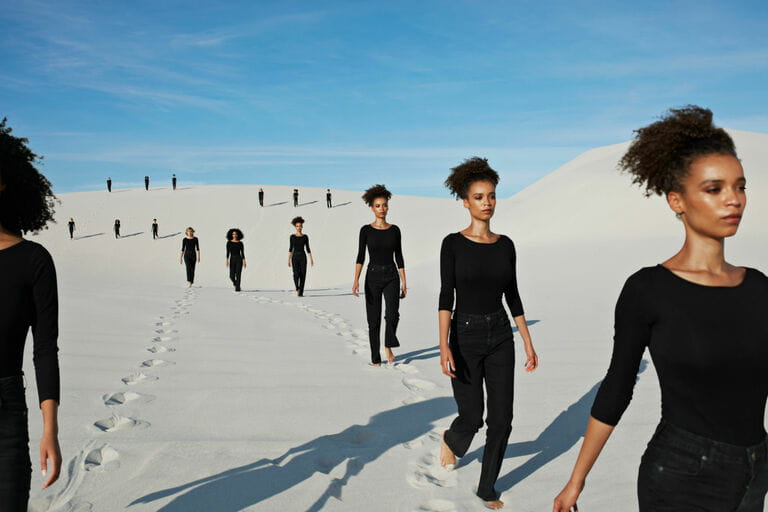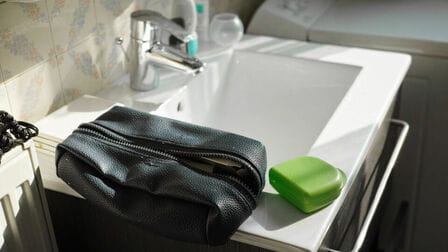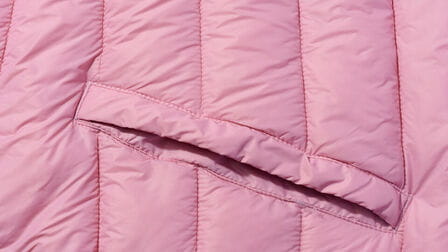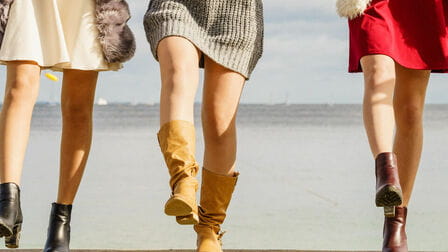Fashion trends may come and go, but some outdated style "rules" have stuck around much longer than they deserve. Though once considered etiquette, these old-fashioned norms need to be retired so we can embrace more personal and less restrictive notions of style. Let's take a look at which fashion faux pas are now generally accepted as fashion do's.
No White After Labor Day is an Arbitrary Rule
This long-held maxim that white should only be worn during summer is antiquated and irrelevant today.
The Origins are Classist
This rule has classist origins in the early 20th century, when the upper classes wore white in summer to distinguish themselves from laborers. As seasons changed, they switched to darker colors to mark summer's end.
Such notions seem arcane today. With climate change disrupting weather patterns, confining white only to summer makes little sense. Nor do class-based implications around this color have any place in modern fashion.
White is Stylish Year-Round
White clothing is versatile enough for any time of year. Paired with layers in cooler months or lighter fabrics in summer, it's now considered chic all year long rather than just seasonally appropriate. So feel free to sport your favorite white dress or pants 365 days a year.
Matching Shoes and Bags Isn't Necessary
Once a signifier of polish and taste, complementing shoes and handbags now feels formulaic. Intentionally contrasting these accessories makes for more personalized style.
Exact Matching Looks Contrived
Outfits with perfectly matched bags and shoes tend to look overly calculated. With so many shoe options today like sneakers, sandals or oxfords, exactly matching these items often means defaulting to unoriginal pairings likes heels with satchels.
Clashing Accessories Add Interest
Mismatched footwear and handbags is no longer a faux pas. Contrasting textures, colors or levels of formality between these items brings visual interest. Unexpected combinations like leather shoes with woven bags also enables self-expression.
Wearing Black to Weddings is Fair Game
Although once considered somber attire for sad occasions, black dresses or suits at weddings are now chic, not gloomy. This hue has evolved beyond stereotypical associations with grieving and funerals.
Black's Reputation has Evolved
Outside traditional mourning periods, black clothing was long seen as taboo for celebratory events like nuptials. But its modern-day versatility as formalwear renders this old rule moot. For day or evening affairs, black ensembles appear sophisticated.
It's All About Execution, Not Color
Avoiding funereal black at weddings was about propriety and aesthetics. But black garb needn't appear dour nowadays. Sleek black dresses or sharply tailored suits seem elegant and appropriate rather than inappropriately dark. Just style black pieces thoughtfully.
Horizontal Stripes Flatter All Figures
The notion that horizontal stripes are unflattering on plus-size bodies promotes regressive and body-shaming attitudes. Style transcends size or shape, so this decree merits retirement.
An Outdated Attempt at Flattery
Conventional wisdom long held that horizontal bands added visual width. But such guidelines often aggravate body image issues stemming from media ideals not reflecting reality.
Stripes Have Cross-Body Appeal
Whether slim- or plus-size, horizontal stripes accentuate contours in nuanced ways depending on fabric, scale and colors. Modestly sized stripes act neutrally, while bolder bands can elongate. Most figures suit stripes styled tastefully.
White Shoes Beyond Summer are Stylish
Similar to white apparel, the notion that white shoes don't belong in cooler months is arbitrary and tired. Footwear in lighter hues now looks chic year-round.
Seasonality Makes Little Sense Nowadays
This rule echoed the dated white clothing rule. But with distinct lines between seasonal styles disappearing nowadays, wearing white kicks in winter seems perfectly apt.
Crispness Transcends Weather
White shoes project a cleanliness and polish that remains appealing whatever the weather. Set against darker tones in colder seasons, white shoes stand out crisply. And they complement the pastels prevalent in spring and summer.
Heels Don't Dictate Professionalism
The assumption that formal footwear like heels denotes workplace competence is increasingly passé. Flats and other comfortable shoes get the job done with aplomb minus pain or falling risks.
Ability Outranks Appearance
With sexist dress codes getting overhauled, personal presentation matters less than capabilities and output. Heels project elegance but don't enhance intelligence or skills. Professionalism requires no specific shoes nowadays.
Comfort Boosts Confidence
Being well-shod in sturdy, walkable shoes bolsters confidence more than stylish but torturous stilettos. Sick of sore feet and wipeouts, women are prioritizing comfort in business or formal contexts. Socially and literally elevated by flats, they stride through meetings or events assuredly.
Bare Arms Display Confidence, Not Immodesty
Deeming exposed skin as indecent disregards personal choice and temperate climes. Whether due to religion, gender or climate, some women still prefer to cover arms or legs. But sleeveless or strapless outfits feel comfortable, modern and empowering to many. So let's not equate dress codes with modesty.
Arm Exposure Feels Liberating

Baring arms was long associated with salaciousness or temptation that women needed to keep in check. But for hot locales or activities, sleeveless garments feel sensible and culturally attuned. Stifling bodies with excess fabric feels oppressive versus freeing nowadays.
Choice Tops Mandates
Modesty resonates differently across eras, faiths and regions. Irrespective, dictating appropriate coverage based on gender denies women agency over our bodies. Dress codes ignoring female autonomy belong back in less enlightened times regarding gender equality or cool comfort.
Mix Metals for Personal Flair
Strict rules around mixing jewelry metals limit individuality. Blending metals like silver, gold and rose gold allows personalized accessorizing no longer bound by this decree.
Ornament Pairings are More Eclectic Now
Combining metals was once considered tacky. But as style conventions ease, creative juxtapositions like rose gold and platinum appear chic rather than clashing. Distinctive pairings feel right, not wrong.
Statement Style isn’t Confined
With restraint giving way to self-expression in accessories, there’s no need to coordinate metals specifically. Standout pieces feel intended to dazzle, not match dimensionally. Why conform when we can gleefully forge our own stylistic paths?
Sleek White After Dark
Associations linking white exclusively with daytime do this striking shade and its evening elegance a disservice. Satiny white dresses glitter glamorously once light wanes, disproving this obsolete wisdom.
Light Colors Bring Light

Pale apparel after dusk may seem awkward given long-held views of darker tones being inherently more formal. But vibrant white clothing feels luminous and thus perfect for nights out.
Making White Shine
From lace overlays to silky fabrics...and rhinestone accents to frosty eye makeup...white shifts stylishly into evenings with stylish complementary support. Add some shimmer and shine, and white after dark seems anything but forbidden.
Conclusion
Many outdated dress codes still get treated as sacrosanct by the old fashioned. But blind adherence to these archaic rules does modern autonomous taste an injustice. Today's stylistic possibilities are boundless. We finally have the freedom to decide line, color and pattern combinations based on personal preference, not the fashion police. Liberated from past dictates, let's style and dress more boldly as we choose.












